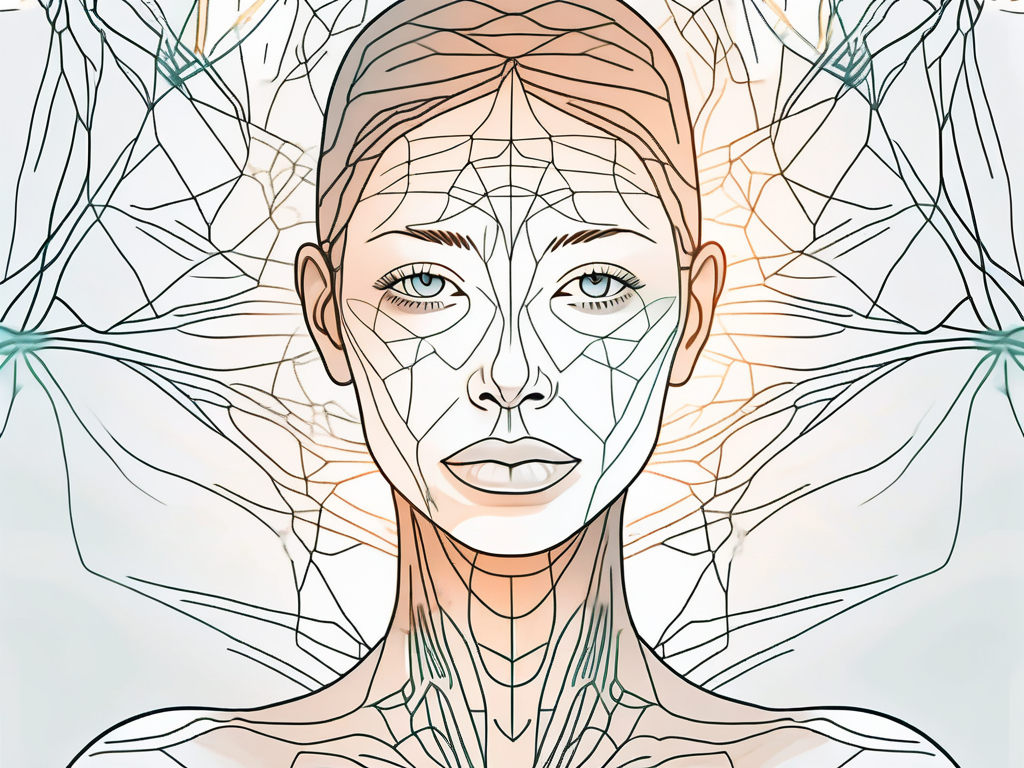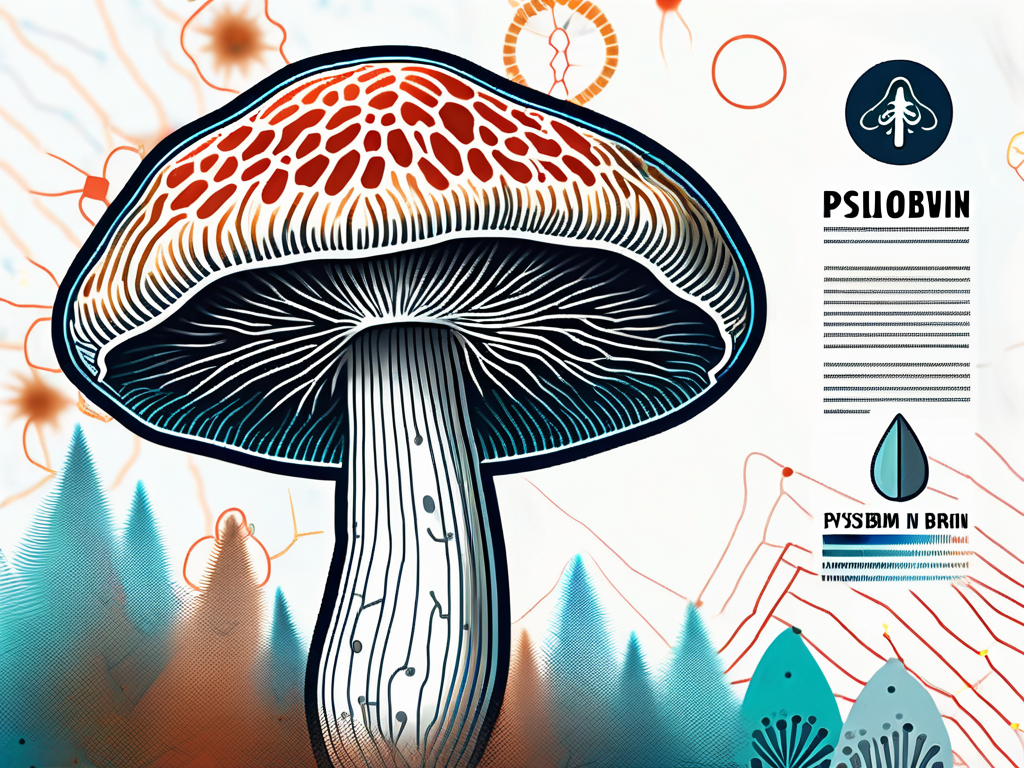
In recent years, there has been growing interest in the effects of psilocybin, a naturally occurring hallucinogenic compound found in certain species of mushrooms. As research into the therapeutic potential of psilocybin continues to expand, so does the demand for the compound. This has led to the development of synthetic psilocybin, which offers a promising alternative to natural sources. But does synthetic psilocybin have the same effects on the mind and body as its natural counterpart? To answer this question, it is essential to understand the differences between natural and synthetic psilocybin.
Understanding Psilocybin: Natural vs Synthetic
What is Psilocybin?
Psilocybin is a naturally occurring compound found in certain species of mushrooms, commonly known as “magic mushrooms.” These mushrooms have been used for centuries in cultural and religious practices, primarily for their hallucinogenic effects. Psilocybin works by affecting serotonin receptors in the brain, leading to alterations in perception, mood, and cognition.
One interesting aspect of psilocybin is its potential therapeutic benefits. Recent studies have shown promising results in using psilocybin-assisted therapy to treat conditions such as depression, anxiety, and PTSD. The compound is believed to help individuals experience a shift in perspective and break free from negative thought patterns.
The Process of Synthesizing Psilocybin
Synthetic psilocybin is created through a laboratory process that involves the chemical synthesis of the compound. This allows for precise control over the purity and potency of the final product. Synthetic psilocybin is often used in research studies and clinical trials, as it provides a consistent and reliable source of the compound.
Researchers are also exploring the potential of synthetic psilocybin in developing new psychiatric medications. By understanding the chemical structure of psilocybin and its interactions with the brain, scientists hope to create more targeted treatments for mental health disorders. This research could pave the way for innovative therapies that offer alternative approaches to traditional pharmaceuticals.
The Psychological Effects of Psilocybin
The Impact of Psilocybin on the Brain
When consumed, psilocybin interacts with serotonin receptors in the brain, particularly the 5-HT2A receptor. This interaction leads to a cascade of effects, including changes in perception, thought patterns, and consciousness. Psilocybin has been shown to induce profound alterations in subjective experience, often described as “expanded consciousness” or “ego dissolution.”
Moreover, recent studies have suggested that psilocybin may have the potential to rewire neural connections in the brain, leading to long-lasting changes in neural pathways associated with mood regulation and emotional processing. This neural plasticity induced by psilocybin could explain its therapeutic effects in conditions such as depression, anxiety, and PTSD.
Emotional and Cognitive Changes
Beyond its impact on perception, psilocybin also influences emotional and cognitive processes. Many individuals report experiencing profound emotions, including feelings of awe, interconnectedness, and a sense of profound meaning. In addition, psilocybin can enhance creativity, problem-solving abilities, and promote introspection and self-reflection.
Furthermore, research has shown that psilocybin-assisted therapy can lead to significant improvements in emotional regulation and empathy, suggesting its potential in treating mood disorders and enhancing interpersonal relationships. The emotional and cognitive changes induced by psilocybin highlight its complex and multifaceted effects on the human psyche, offering new insights into the therapeutic potential of this compound.
The Physical Effects of Psilocybin
Psilocybin, the psychoactive compound found in certain types of mushrooms, can have a range of physical effects on the body when consumed. In addition to its well-known psychological effects, psilocybin can also lead to various short-term physical reactions. These may include alterations in heart rate, blood pressure, and body temperature. Individuals who ingest psilocybin may also experience symptoms such as nausea, dizziness, muscle weakness, and changes in appetite. It is important to recognize that these physical effects are typically transient and tend to diminish as the body metabolizes the compound.
Moreover, beyond the immediate physical responses to psilocybin, there is ongoing research into the potential long-term physical implications of its use. Current studies suggest that when used in a controlled and supervised environment, psilocybin does not present significant long-term physical risks. However, it is crucial to acknowledge that the exploration of the enduring physical effects of synthetic psilocybin, in particular, is an area that continues to evolve with ongoing research efforts.
Short-term Physical Reactions
When consumed, psilocybin can produce various short-term physical reactions. These may include changes in heart rate, blood pressure, and body temperature. Additionally, psilocybin can cause nausea, dizziness, muscle weakness, and changes in appetite. It is crucial to note that these effects are generally temporary and subside as the compound is metabolized by the body.
Long-term Physical Implications
Research indicates that psilocybin does not pose significant long-term physical risks when used in a controlled setting. However, it is essential to highlight that the long-term physical implications of synthetic psilocybin specifically are still relatively unexplored, as research in this area is ongoing.
Comparing the Effects of Natural and Synthetic Psilocybin
Similarities in Effects
Both natural and synthetic psilocybin exhibit similar effects on the mind and body. When consumed in appropriate doses, both compounds can induce altered states of consciousness, leading to changes in perception, mood, and cognition. These effects are generally transient and can vary depending on individual factors, such as set and setting.
Psilocybin, whether natural or synthetic, interacts with serotonin receptors in the brain, particularly the 5-HT2A receptors, leading to the characteristic psychedelic effects. These effects can include visual distortions, changes in time perception, and a sense of interconnectedness with the environment. Research suggests that both forms of psilocybin have the potential to promote neuroplasticity and create new neural connections, which may underlie their therapeutic benefits.
Differences in Effects
While natural and synthetic psilocybin produce similar effects, there may be subtle differences between the two. Some anecdotal reports suggest that natural psilocybin may produce a more euphoric and spiritual experience compared to synthetic psilocybin. However, more research is needed to fully understand these potential differences.
One possible explanation for reported differences in experiences between natural and synthetic psilocybin could be the presence of other compounds in natural mushrooms. Psilocybin-containing mushrooms also contain other psychoactive compounds, such as baeocystin and norbaeocystin, which may contribute to the overall psychedelic experience. These additional compounds could potentially modulate the effects of psilocybin and result in a unique subjective experience compared to pure synthetic psilocybin.
The Safety and Risks of Synthetic Psilocybin
Potential Health Risks
As with any psychoactive substance, there are potential risks associated with the use of synthetic psilocybin. These risks can include temporary increases in anxiety or paranoia, particularly in individuals predisposed to such conditions. Additionally, synthetic psilocybin should never be combined with other substances, including alcohol and certain medications, as this can lead to unpredictable and potentially dangerous interactions.
Considerations for Safe Use
To ensure safe use of synthetic psilocybin, it is crucial to follow established guidelines. This includes using the compound in a controlled and supervised environment, with proper dosing and precautions in place. Additionally, it is important to engage in thorough research and consult with knowledgeable professionals to minimize potential risks and maximize the therapeutic benefits of synthetic psilocybin.
When it comes to the safe use of synthetic psilocybin, it is also important to consider the individual’s mental and emotional state. Those with a history of mental health disorders, such as schizophrenia or bipolar disorder, may be at a higher risk of experiencing adverse effects from psilocybin. It is recommended that individuals with these conditions consult with a mental health professional before considering the use of synthetic psilocybin.
Furthermore, the setting in which synthetic psilocybin is consumed can greatly impact the overall experience and safety. A calm and comfortable environment, free from distractions and potential triggers, is ideal for a positive and safe psilocybin journey. This could be a quiet room in one’s home or a specially designed therapeutic space, where the individual feels secure and supported throughout the experience.
Additionally, it is crucial to have a trusted and experienced trip sitter present during the psilocybin session. A trip sitter is someone who remains sober and provides emotional support and guidance throughout the experience. Their presence can help ensure the individual’s safety and provide reassurance in case any challenging emotions or thoughts arise.
In conclusion, while synthetic psilocybin offers a promising alternative to natural sources, its effects on the mind and body are generally similar to those of the natural compound. Both natural and synthetic psilocybin can induce profound psychological and perceptual changes, along with temporary physical reactions. However, further research is necessary to fully understand any potential differences between the two and the long-term physical implications of synthetic psilocybin specifically. As the field of psychedelic research continues to advance, it is crucial to prioritize safety and responsible use to reap the therapeutic benefits of psilocybin in its various forms.








